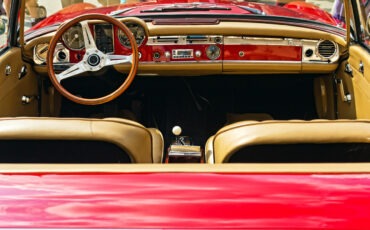
The aftermath of a car accident often unfolds in unexpected ways. While some injuries are immediately evident, others might not manifest until much later, leaving victims to deal with unforeseen health issues long after the accident occurred. This delayed onset can complicate both medical treatment and legal claims, making the path to recovery both physically and financially challenging.
Understanding how these injuries can surface over time and the crucial role of a car accident injury attorney in addressing them is essential for anyone involved in a car accident. It underscores the importance of vigilance in monitoring one’s health and rights in the weeks and months following an accident.
Delayed Injury Symptoms
Delayed symptoms after a car accident are more common than many realize. Conditions such as whiplash, concussions, or even internal bleeding might not immediately present symptoms. The adrenaline rush during the incident can mask pain, leading some to believe they’ve escaped unscathed, only to find themselves facing serious health issues later on. Recognizing the potential for such delayed symptoms and seeking medical attention as soon as they appear is critical for your health and any potential compensation claims.
The Importance of Medical Evaluation
Even if you feel fine, an immediate medical evaluation after a car accident is crucial. Some injuries, particularly those related to the brain, spine, or internal organs, might not show symptoms immediately but can have severe consequences if left untreated. Early medical documentation also provides a vital link between the accident and any late-emerging injuries, serving as essential evidence should you need to pursue a legal claim for these delayed symptoms.
Documenting Your Injuries
If injuries develop after the initial impact, documenting every detail becomes your ally. This includes keeping a diary of symptoms, tracking all medical consultations and treatments received, and noting how the injury affects your daily activities and overall quality of life. Such diligent documentation forms the backbone of your legal claim, highlighting the direct consequences of the accident on your health and well-being.
Understanding Your Legal Rights
The legal landscape post-accident can be a minefield, especially with injuries that surface later. Awareness of your rights and the specific time limits for filing a compensation claim in your state is paramount. This knowledge is crucial in ensuring that the opportunity to seek justice does not slip away due to technicalities related to the timing of your injury’s manifestation.
How an Attorney Can Assist
A car accident injury attorney becomes indispensable when dealing with injuries that appear well after the accident. They expertly navigate the complexities of your case, ensuring that even those injuries that emerged later are accounted for. Their guidance is instrumental in building a robust case that fully represents the extent and impact of your injuries, advocating for your right to comprehensive compensation.
Dealing with Insurance Companies
Insurance companies often push for quick settlements, which can be problematic if injuries surface later. An experienced attorney knows how to handle these situations, engaging in negotiations that open the door for addressing future medical issues arising from the accident. Their expertise is critical in securing a settlement that considers immediate and long-term needs, protecting you from being shortchanged.
Securing Fair Compensation
Achieving fair compensation involves more than just tallying current medical expenses. It encompasses lost wages, potential future medical treatments, and compensation for pain and suffering. A seasoned attorney delves into all these aspects, ensuring that the compensation sought reflects the full spectrum of your losses, including those from injuries that only became apparent after some time.
Providing Peace of Mind
Beyond the legal and financial aspects, having an attorney by your side offers emotional and psychological reassurance. Navigating the aftermath of a car accident can be overwhelmingly stressful. Knowing that a knowledgeable professional is managing the intricacies of your case allows you to focus on your recovery, secure in the knowledge that your interests are being protected and advocated for effectively.
Injuries emerging months after a car accident present unique challenges, making vigilance in health monitoring and legal preparedness paramount. Engaging a car accident injury attorney early on ensures that any delayed symptoms are appropriately addressed within your claim, safeguarding your rights and facilitating a path to recovery that accounts for all your injuries, seen and unseen. This comprehensive approach ensures you’re not left alone with late-appearing injuries, providing a foundation for healing and financial stability.












